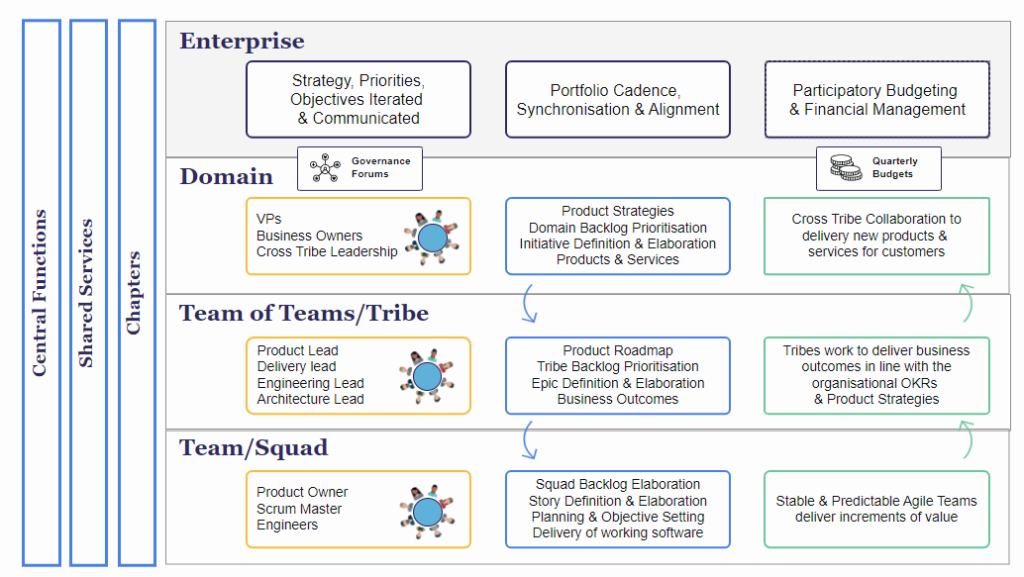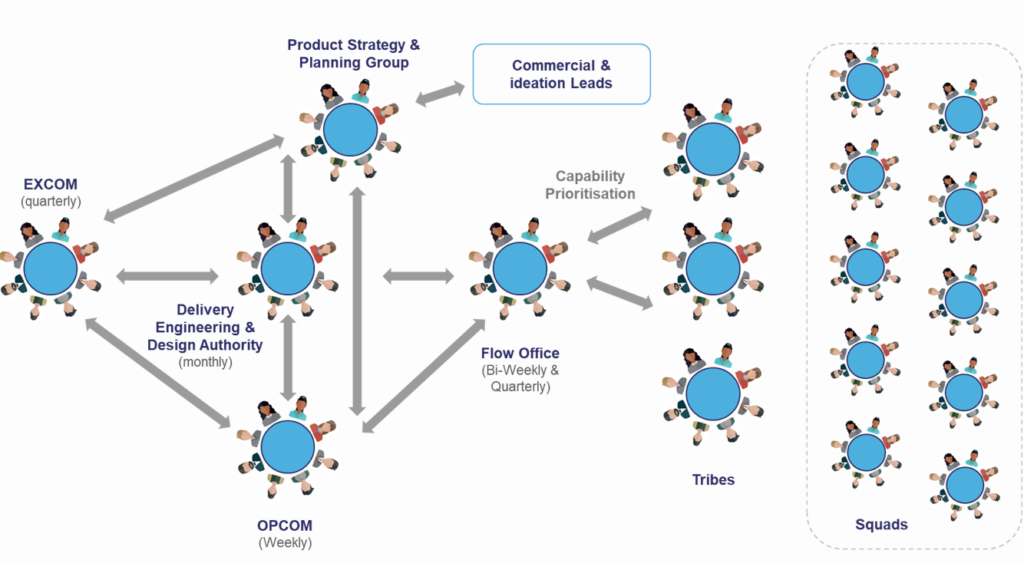Our website is not supported on this browser
The browser you are using (Internet Explorer) cannot display our content.
Please come back on a more recent browser to have the best experience possible

MP partnered with a fast-growing blockchain infrastructure research & engineering firm that faced several critical challenges. The client struggled with changing scope and requirements as well as centralised decision-making, which hindered their ability to release value and maintain financial stability. Despite being agile, the client’s growth had led to a need for a balance of more formal governance to maintain direction and control.
Through a strategic partnership, MP helped the client overcome these obstacles by designing and implementing an agile governance model that enabled them to retain flexibility while improving time to market. Using our OKR framework, we were able to better align delivery with strategic priorities. The implementation of a formal product management process also allowed the client to improve their prioritisation and decision-making ability, expanding their product offerings.
As a set of priorities, the client organisation wanted to retain their ability to operate flexibly, while improving their time to market. They wanted to ensure that delivery was aligned to strategic priority, expand their product offering and grow their headcount at the same time.
Below, we outline our approach to operating model design and deployment.
Our innovative solution involved the development of a modular Target Operating Model that aligned the client’s portfolio of work around a common set of agile operating principles. This enabled flexible yet structured operations with more formal governance to control scope, prioritisation, and value delivery. By structuring teams based on the value streams they were delivering, we created a cohesive and aligned organisation that could quickly adapt to changing priorities and requirements.
Our team leveraged our practical experience and expertise in delivery frameworks, including the Scaled Agile Framework and Spotify Models, to tailor a unique operating model that was specifically designed to meet the client’s needs. This approach blended best practices with customised elements to ensure that the client had the optimal structure to achieve its strategic goals.
The figure below outlines the delivery structure put in place to enhance execution & align corporate governance to delivery.

To implement the Operating Model and drive organisational maturity, MP established a dedicated business improvement function. This team worked closely with the client to introduce corporate governance and optimise organisational flow, resulting in synchronised delivery and improved decision-making quality.
To enhance governance and decision-making further, MP established formal information channels and introduced governance ceremonies with specific remits. These changes enabled faster and more informed decision-making, resulting in improved delivery speed and higher-quality outcomes.
The figure below illustrates the governance ceremonies and information channels that MP introduced, which were tailored to the client’s needs and aligned their strategic priorities.

MP worked to mature the client’s agile ways of working and provided the foundations for a culture of continuous improvement. To achieve this, we developed and delivered a global agile training program that covered the enterprise, portfolio, and team layers. This comprehensive approach ensured that all staff members received the training and tools they needed to succeed.
Our training program wasn’t just limited to team members. We also provided management and executives with specialised training and tools to effectively lead the change and support the operating model implementation and agile transformation. To ensure that the change was deeply embedded, we deployed agile coaches to work alongside the tribes and squads, providing support and guidance as needed.
MP established chapters to formalise the connections between role families, take ownership of operating principles & processes and share best practices. These chapters not only served as line management and career development centres, but also played a pivotal role in engaging staff members and embedding the changes into the operating model.
Thanks to our comprehensive approach, the client was able to quickly adopt the target operating model and embrace a culture of continuous improvement. Our coaching and training initiatives helped teams progress on their agile journey, resulting in improved performance and delivery speed.
Thanks to MP’s strategic partnership, the client was able to optimise its operations, achieve greater cross-functional alignment and deliver value to its customers. They also improved the transparency of work being carried out, decreased the cost of each product/capability, and generated greater value with more consistency. By overcoming many of the initial challenges and focussing on delivering innovative solutions, the client was able to achieve sustainable growth.
This article was written by David Arrick, Technical Director.
Loved what you just read?
Let's stay in touch.
No spam, only great things to read in our newsletter.
We combine our expertise with a fine knowledge of the industry to deliver high-value project management services.
MIGSO-PCUBED is part of the ALTEN group.
Find us around the world
Australia – Canada – France – Germany – Italy – Mexico – Portugal – Romania – South East Asia – Spain – Switzerland – United Kingdom – United States
© 2024 MIGSO-PCUBED. All rights reserved | Legal information | Privacy Policy | Cookie Settings | Intranet
Choose your language
Our website is not supported on this browser
The browser you are using (Internet Explorer) cannot display our content.
Please come back on a more recent browser to have the best experience possible
